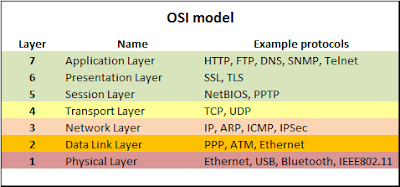IP address
IP Address
IP stands for Internet Protocol which consists of unique address represented by numbers e.g 192.168.0.5 and can be found on any device connected to a network. Why do we need an IP address? An IP address allows a computer to send and receive information to and from specific computers in a given network. Likewise how we request any information on internet, while the request that is been sent is been checked from which address the request is coming and it gets our public IP address, if we are unable to access any website it means our ISP(Internet Service Provider) has blocked our IP to get an access of that website.
If you want to check IP of your system you can do the following :
Step 1 : Press windows key plus R, a dialog box will appear asking you to type a name of a program, folder, document..
Step 2 : Type cmd
Step 3 : Press ok
Step 4 : Type ipconfig and press enter
If you are using linux operating system type ifconfig in terminal
Step 5 : Under the wireless LAN adapter Wi-Fi, you will see IPv4 address . . . . . 192.168.0.2 or any digit at the ends, that will be your IP address.
How many types of IP's are there ?
There are two types of IP's - Public and Private. Public IP is that what we get from our ISP which can also be found out from any browser, just type myip in the search engine click on the very first link and there you can see your public ip is visible.
Public IP will change depending on the network you are connected in and one or more user can get the same public IP if they are connected on the same network but their private IP's will differ ofcourse. The IP that we saw on command prompt is our private IP or you can say our device's IP. Under private IP we have two more types of IP's i.e static and dynamic. A static IP is one that does not change, once your device is assigned a static IP address the number typically stays until your network architecture changes. A static IP address can be IPv4 or IPv6. For now we usually use IPv4 addresses for permanent address. A dynamic IP are subject to change. Dynamic IP are assigned by DHCP i.e Dynamic Host Configuration Protocol server. We use dynamic IP because IPv4 does not provide enough static IP addresses.
Since we are dealing about IPv4 and IPv6 let's talk about them, there are two versions of IP's. What is IPV4? IPv4 is the first version of IP, which was deployed by ARPANET in 1984. It is most likely to be used in today's time. IPv4 uses 32 bit address scheme allowing to use 2^32 addresses which is more than 4 billion address and it carries 94% of internet traffic.
What is IPv6? It is the latest version of IP. It was aimed to resolve issues which are associated with IPv4. It has 128 address space which allows 340 undecillion unique address space. Today only 2% of internet traffic is using IPv6 from last year and in india reliance jio is offering IPv6 services since sept 2016.
Learn : OSI Model
Since we are dealing about IPv4 and IPv6 let's talk about them, there are two versions of IP's. What is IPV4? IPv4 is the first version of IP, which was deployed by ARPANET in 1984. It is most likely to be used in today's time. IPv4 uses 32 bit address scheme allowing to use 2^32 addresses which is more than 4 billion address and it carries 94% of internet traffic.
What is IPv6? It is the latest version of IP. It was aimed to resolve issues which are associated with IPv4. It has 128 address space which allows 340 undecillion unique address space. Today only 2% of internet traffic is using IPv6 from last year and in india reliance jio is offering IPv6 services since sept 2016.
Learn : OSI Model




Comments
Post a Comment